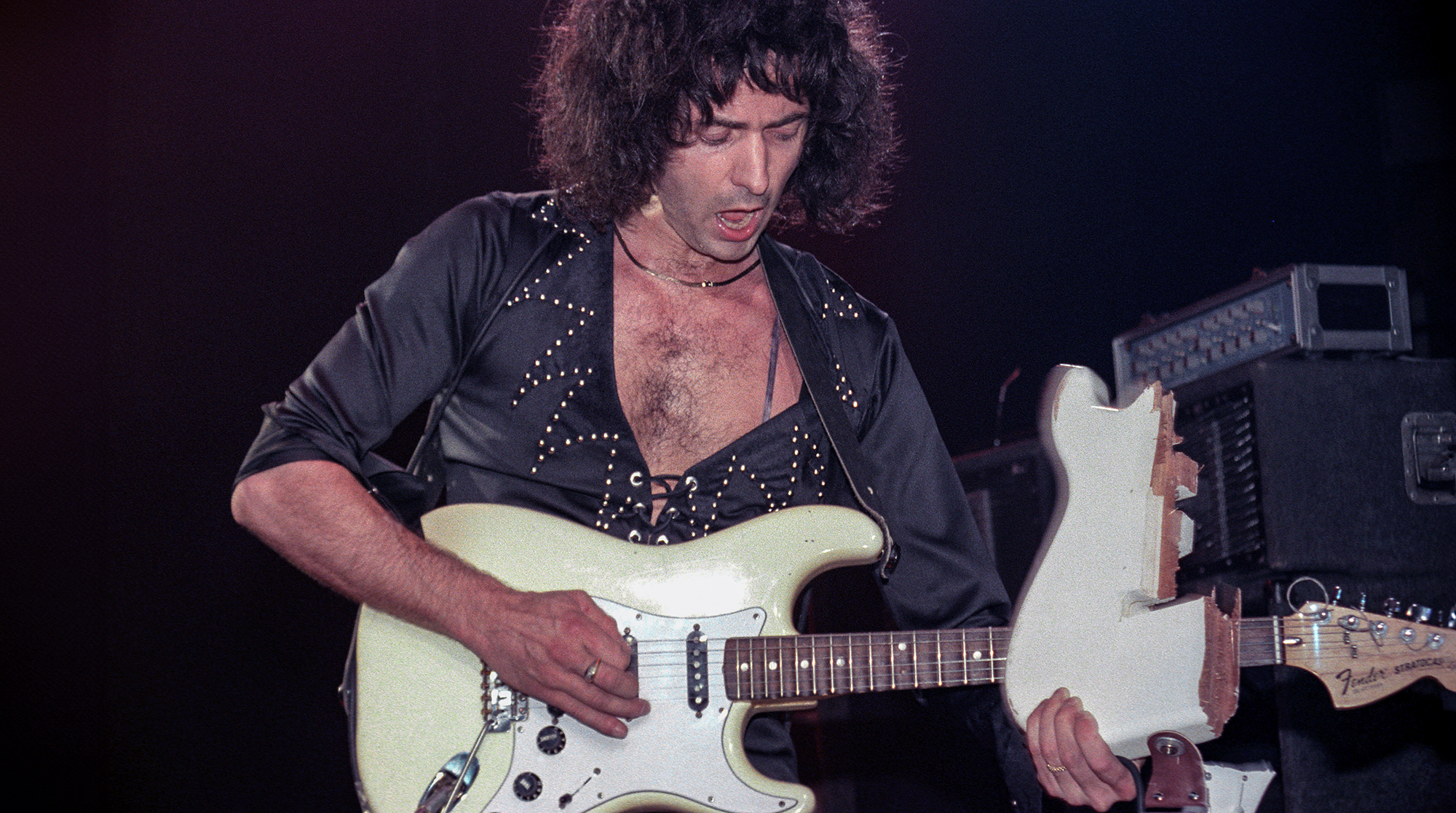“I developed this whammy-bar setup when I heard Jeff Beck's 'Guitar Shop' album." Carl Verheyen helps you master the whammy with six stunning licks and riffs in our video lesson
Verheyen said Beck's album "made me realize it would be nice to know what intervals would happen when I pulled on the bar”
Carl Verheyen knows a thing or two about guitar playing. He's been an A-list LA session guitarist for the likes of the Bee Gees and Dolly Parton, played on Hollywood soundtracks such as Dusk 'til Dawn and The Crow, plus plays guitar for Supertramp. On top of all that, he has had a long solo career with vibrant albums such as Garage Sale (1994) through to Sundial (2021), where his trademark string skips, wide intervals and whammy-bar bends stun all those who hear them.
So we asked him to discuss and play some of his favorite whammy licks and riffs so a little of his magic can rub off on you too! Using a variety of Stratocaster-style guitars equipped with a whammy bar, he selected the bridge pickup and a musical sounding overdrive to provide sonic bite and sustain to his playing.
To begin, Carl talks through his floating whammy bar setup, which is quite specific and makes playing the examples more fruitful.
When the bar is pulled fully up, the open third string reaches a Bb note, which is a minor third higher (three frets worth) than the open G. Likewise, the second string raises up to a C# note which is a major 2nd (two frets higher) above the open B. Finally, the open first string becomes an F note with the bar fully pulled up, a semitone higher than the open E.
To achieve this with your own guitar's setup, you (or your local guitar repair shop) will likely need to alter the height of the bridge's posts and adjust the tension on the springs at the back of the guitar's body. See the photo below of Carl’s guitar: the spring claw's angle (to the left of the photo) isn’t as acute as might be expected to achieve these pitch changes.
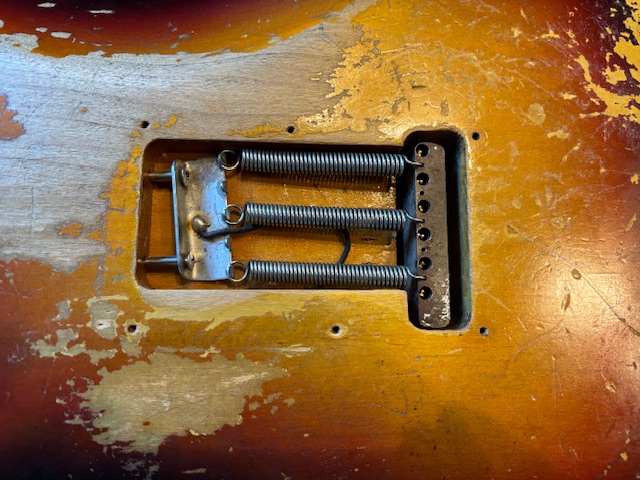
Carl makes using the whammy bar look and sound easy, but if you are new to bending notes and double stops with it, you may find it’ll take some practice to get it consistently in tune.
To keep you on your toes, the licks are in a variety of keys. Once you’ve learned and mastered the ideas in these licks, it would be a good exercise to challenge yourself and play them in a variety of different keys.
All the latest guitar news, interviews, lessons, reviews, deals and more, direct to your inbox!
Hopefully there will be a new technique, lick or phrase in here for you to perfect. If you find one you like, then you can memorize it and use it in future solos.
Ex. 1: Whammy Doublestop Bending
This has a swing feel to the 1/8th notes and is a classic blues-style riff. For the whammy bar bend, barre the second and third strings at the 9th fret and pull the whammy bar up. The tricky element is to let the whammy bar go back down to pitch while moving the finger barre back to the 10th fret.
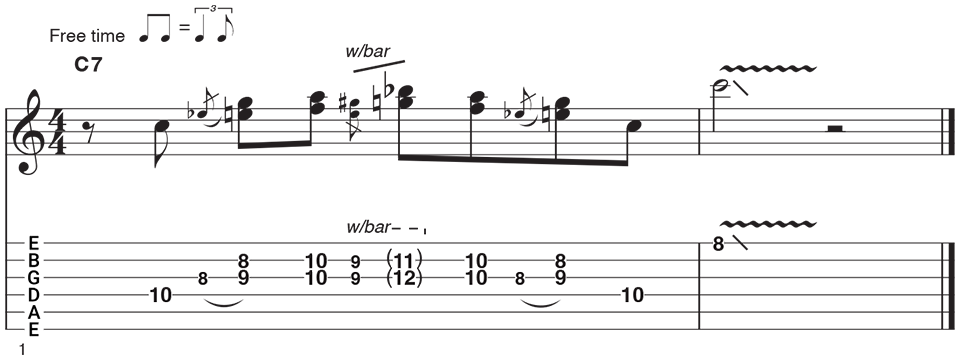
Ex. 2: Shuffle Groove With Whammy Doublestops
This is a slow blues shuffle in the key of E. When the bar is pulled fully back, the C# and the F# bend up to, respectively, E and G automatically. When the bar is released, beat 2&'s chord is re-fretted at the 7th fret for the D and F# notes. These notes are the upper notes found in an E9 chord, the 7th and 9th respectively.
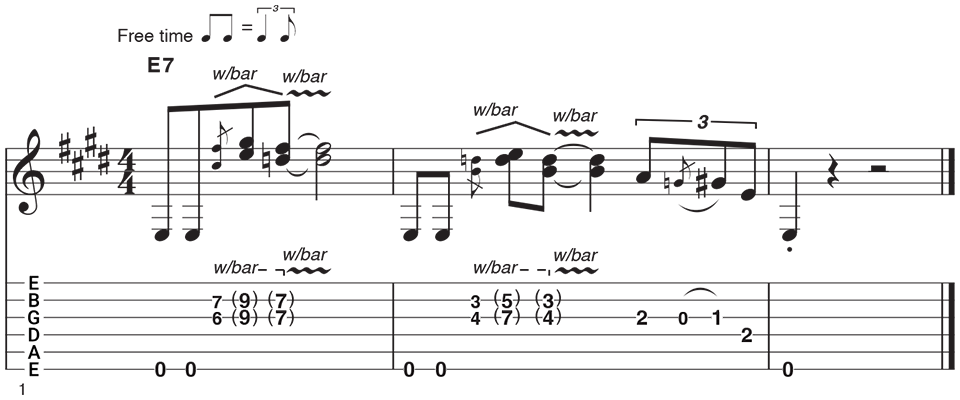
Ex. 3: Whammy Bends on the Top Two Strings
This is in the key of A and is based around a ZZ Top–style groove. Again the D and F# notes on the top two strings turn into the E and G when the bar is fully pulled up. The lick is finished off with a Keith Richards–style string bend on the third and forth strings from the 4th fret to the 5th fret. No bar is required for that!
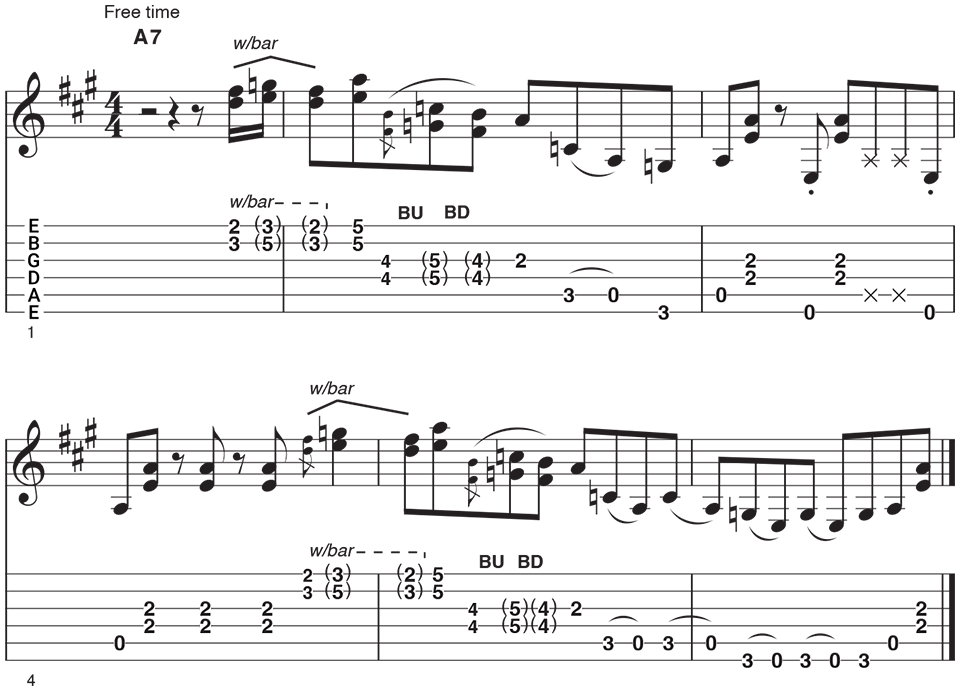
Ex. 4: The Harmonica Lick
Carl says this lick is inspired by the guitarist Jimmy Herring and phrased like a classic harmonica lick. First, rake the pick for the D major ascending triad and as you hit the 10th fret of the second string quickly bend the A note down a semitone to G# with the whammy bar. At bar 1, beat 4, use the bar to bend the F# note ( 11th fret, third string) down to an F note (a virtual 10th fret, hence the brackets shown in the tab). Despite some opinions to the contrary, you can play a major third followed by a minor third over major chords, especially when played with mournful drop bends such as this. Shake some vibrato into the root note D at bar 2.
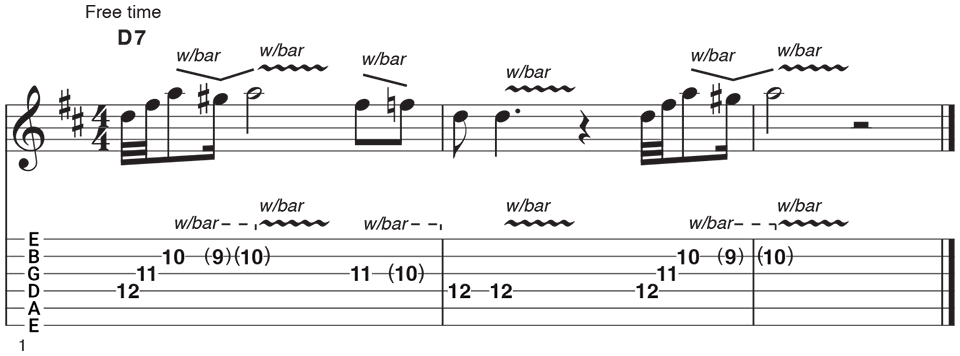
Ex. 5a: Whammy Bar Workout
This demonstrates a great way to add musical-sounding bends when descending a scale. Any notes on the first string are bent up a semitone, notes on the second string are bent up a tone and the third-string notes move in three-fret intervals. Tasty phrasing indeed!
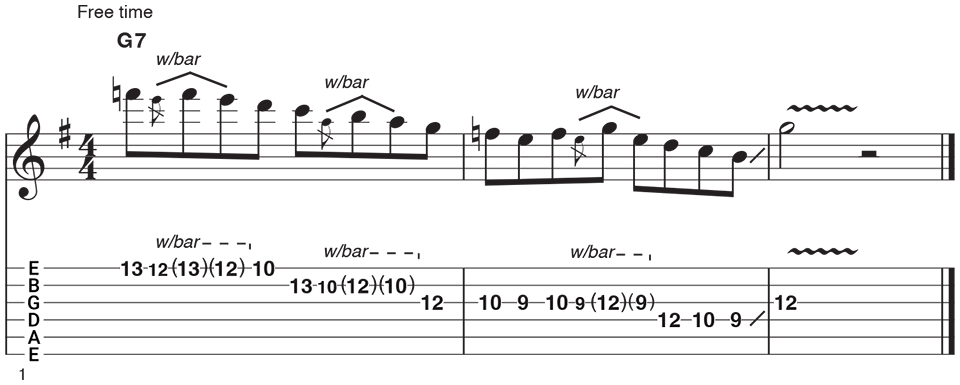
Ex. 5b: Whammy Bar Workout (Extended)
This is a slightly extended version of example 5a. It demonstrates that once you have this concept under your fingers it’s easy to keep it going. You may choose to adapt this idea so it works ascending too.
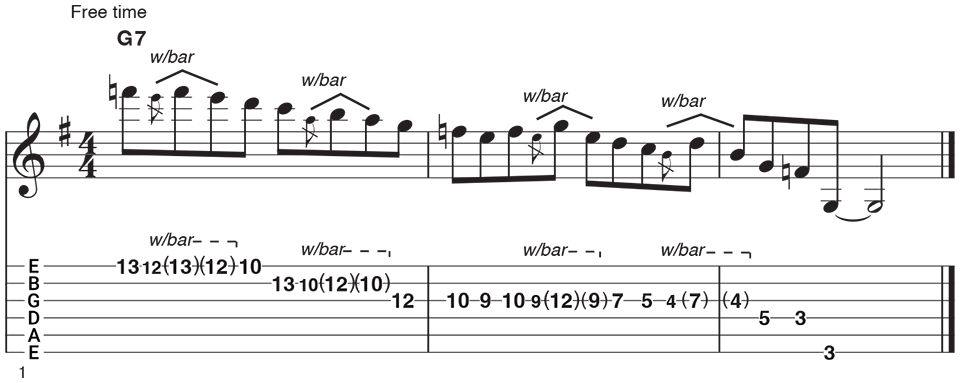
Ex. 6: Whammy Bar Riff
This final lick is a culmination of many of the approaches covered in the previous examples. Now it’s a case of putting everything together and being mindful of your whammy-bar intonation. Enjoy!
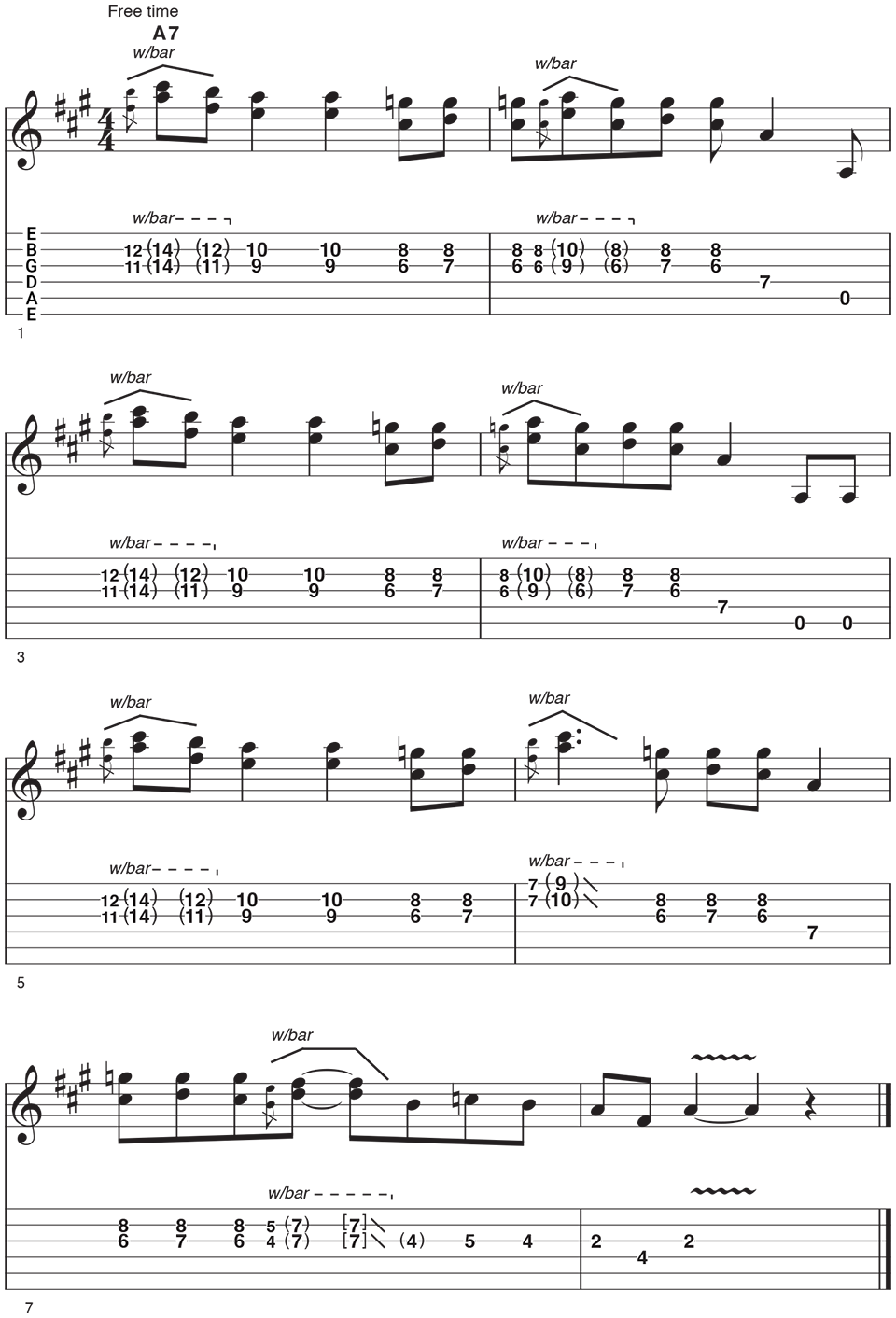
Jon Bishop is a UK-based guitarist and freelance musician, and a longtime contributor to Guitar Techniques and Total Guitar. He's a graduate of the Academy of Contemporary Music in Guildford and is touring and recording guitarist for British rock 'n' roll royalty Shakin’ Stevens.


